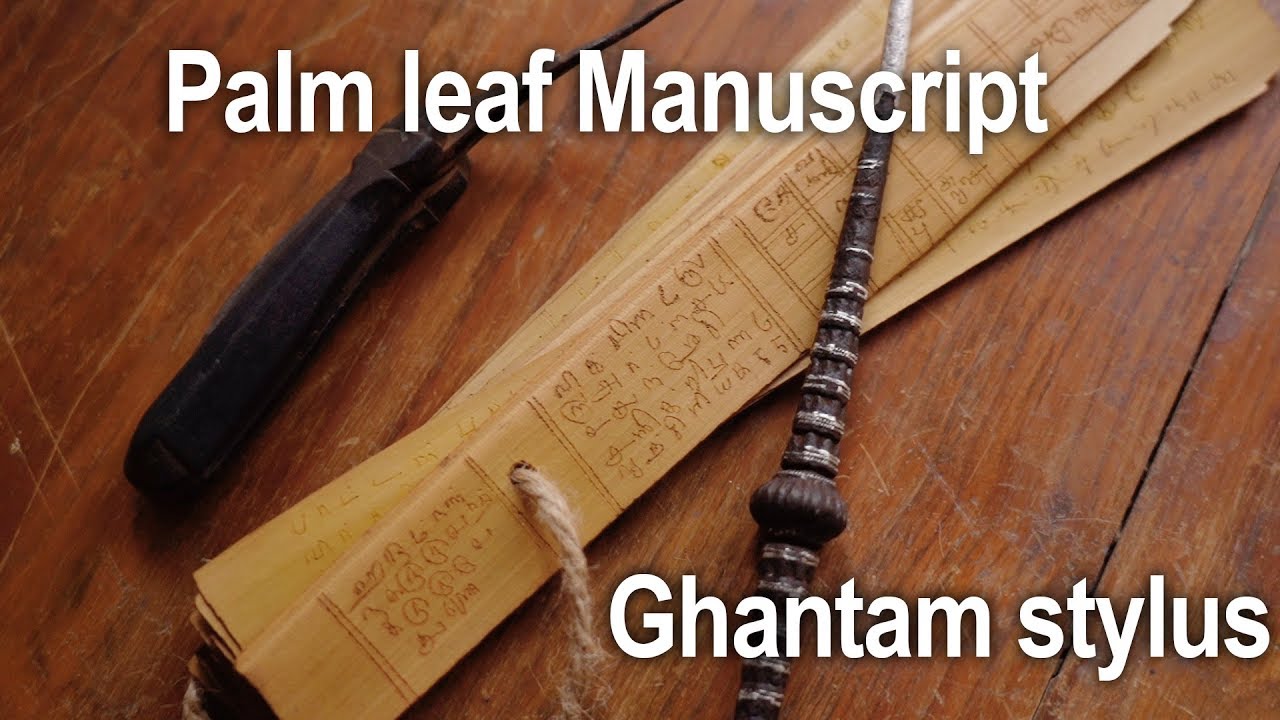In the previous video, the gentleman presented some of the process of making actual palm-leaf manuscripts, including flattening the leaves between wooden blocks, trimming them, treating the leaves with oil, and some of the techniques used for writing, etc. In the following video the presenter mostly speaks about the stylus, which is the instrument used for writing on the manuscripts.
He points out that the use of the stylus itself influenced the rounded shape of many scripts used for writing such as Tamil, Kannada, Malayalam, Telugu, (and I suspect many SE Asian scripts as well), etc. That fact itself shows just how influential palm-leaf manuscripts were historically. Again, this is mostly due to the lack of paper production in those regions.
Paper was not commonly produced in pre-colonial Southeast Asia for a number of reasons. One being the high humidity. Paper molds quickly in tropical climates. Palm leaves resist decay better when oiled. Another was the extensive monsoon rains. Excessive flooding could easily destroy paper stores. Palm-leaf manuscripts were also cheaper to produce locally, without any complex paper-making infrastructure needed to create them. Paper making was also more labor-intensive.
There was some limited amount of paper production in some areas. Shan people, for example, did produce some paper. But the majority of the paper that reached Southeast Asia was bamboo paper imported from China, which was very expensive and had to be acquired via maritime trade.
So palm-leaf manuscripts (which are made from dried and treated palm leaves and can last up to 1,500+ years in the best-case scenario, but usually last 100 to 300+ years in Southeast Asian climates) have traditionally been the primary form of text used to preserve the Dhamma in Southeast Asian Buddhist countries, and due to the challenges with making and acquiring paper, if Western civilization does fall (as was discussed here), it is very likely that Southeast Asian monks will go back to preserving the Buddhist texts via the creation of palm-leaf manuscripts again, rather than modern-style printed soft and hardcover books.
That is why it is very important to realise that the skills needed to produce them (which have been increasingly in decline since the introduction of the Western printing press) need to be preserved.
Renaldo
